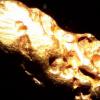Advice On Metal Detecting For Gold Nuggets In Finland
-
Similar Content
-
- 4 replies
- 961 views
-
- 2 replies
- 903 views
-
- 15 replies
- 2,036 views
-
- 0 replies
- 1,753 views
-
- 23 replies
- 3,160 views
-
- 4 replies
- 993 views
-
-








Recommended Posts
Create an account or sign in to comment
You need to be a member in order to leave a comment
Create an account
Sign up for a new account in our community. It's easy!
Register a new accountSign in
Already have an account? Sign in here.
Sign In Now